Two new minimalist pocket games

The peak of the popularity of the Arduboy is already behind, but the development of geeks of minimalist consoles of similar ideology continues. And here in front of you are two new designs of authors under the nicknames of Igor and davedarko, which were released recently.
The first of them - ESP Little Game Engine - is presented on two resources at once: Hackaday.io (description) and GitHub (code). It is made on the ESP8266, displays the image on a TFT display with the ILI9341 controller, and eight buttons are connected to the ESP via the I 2 C bus using the PCF8574 port extender. 32 sprites are implemented in software, as is their rotation and collision detection. It is curious that at first the device diagram was not given - and this is with the firmware under the GPL. But after the "bug report" in the comments ...
')
Hidden text
tormozedison wrote 3 days ago
Cool! Secret circuit circuit diagram. Why?
reply edit delete
Igor wrote 4 hours ago
Nothing secret. Just a screen on i2c
reply
... the developer laid out the scheme:
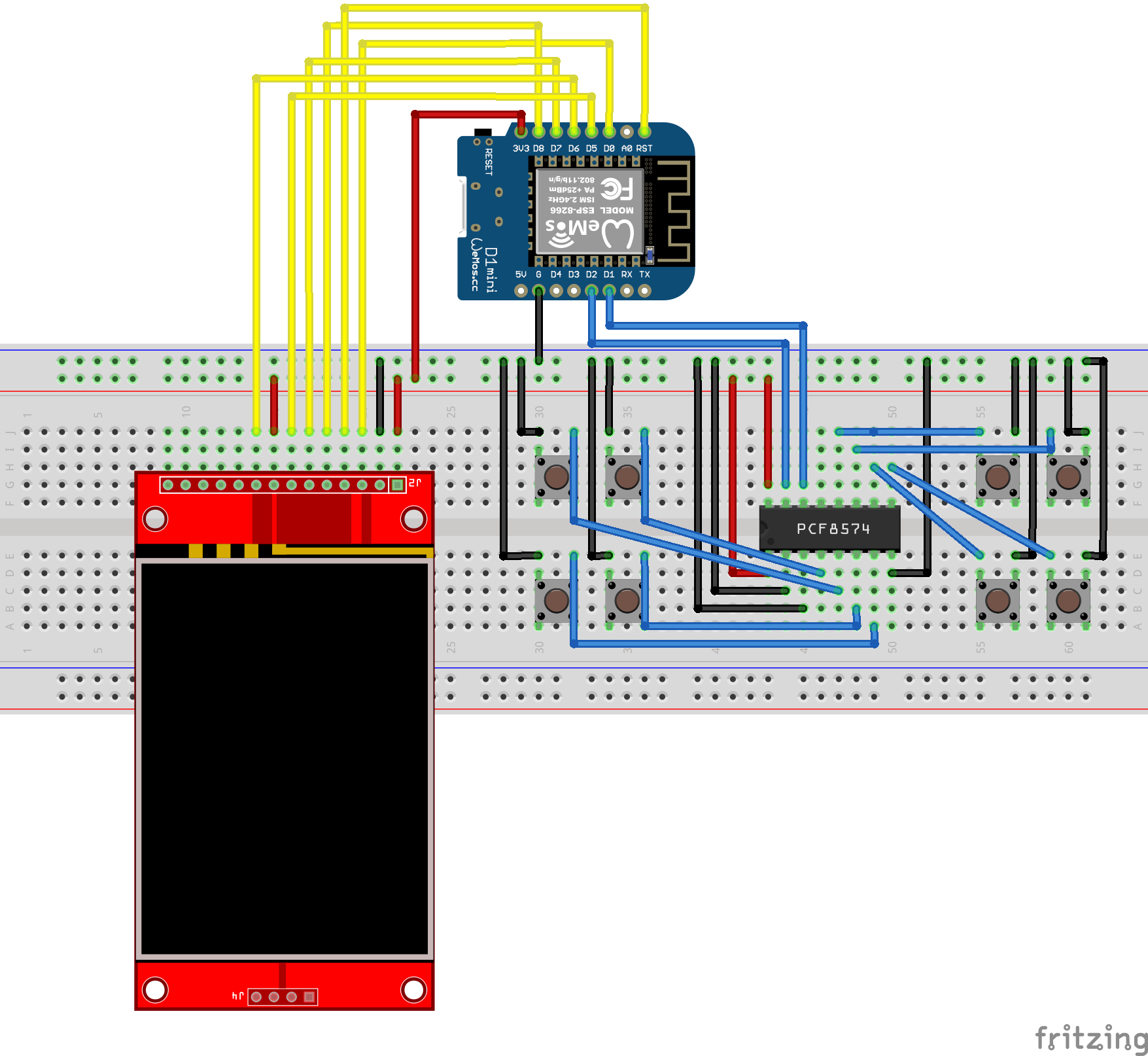
You can compile and debug games for the console in the IDE, which runs directly in the browser , looks like this:
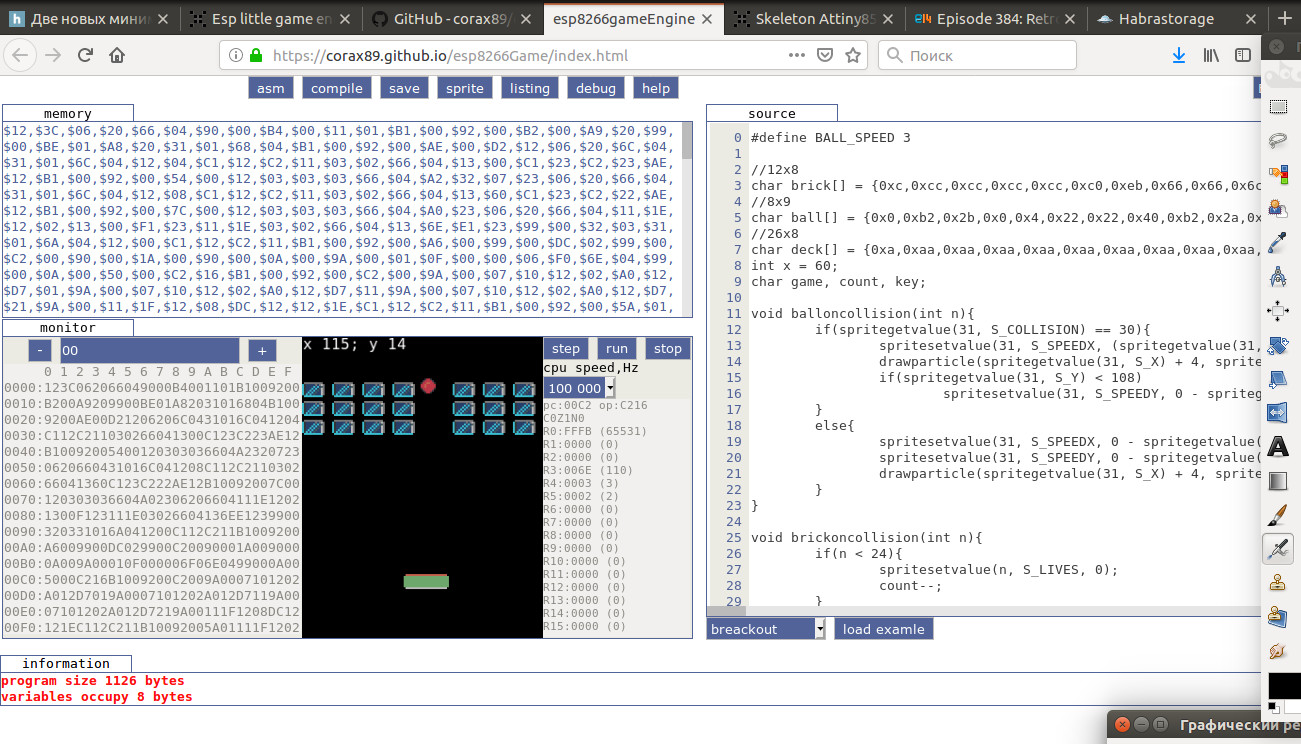
The emulator requires a physical keyboard, the rest of the IDE functions work on the touch.
The author's version of the console is placed in the casing of the Game Boy, in your performance it may be different.
The second console is made on the ATiny85 microcontroller (you can try to adjust the DigiSpark somehow), it uses the same OLED display as in the Arduboy. At first, the story about her was also conducted on Hackaday.io , and the developer assumed that the buttons would be connected by charliplexing. Do not be surprised, so you can connect not only the LEDs, but also buttons, in series with each of which is switched on by the diode. The scheme went like this:

And the console assembled on it looked like this:
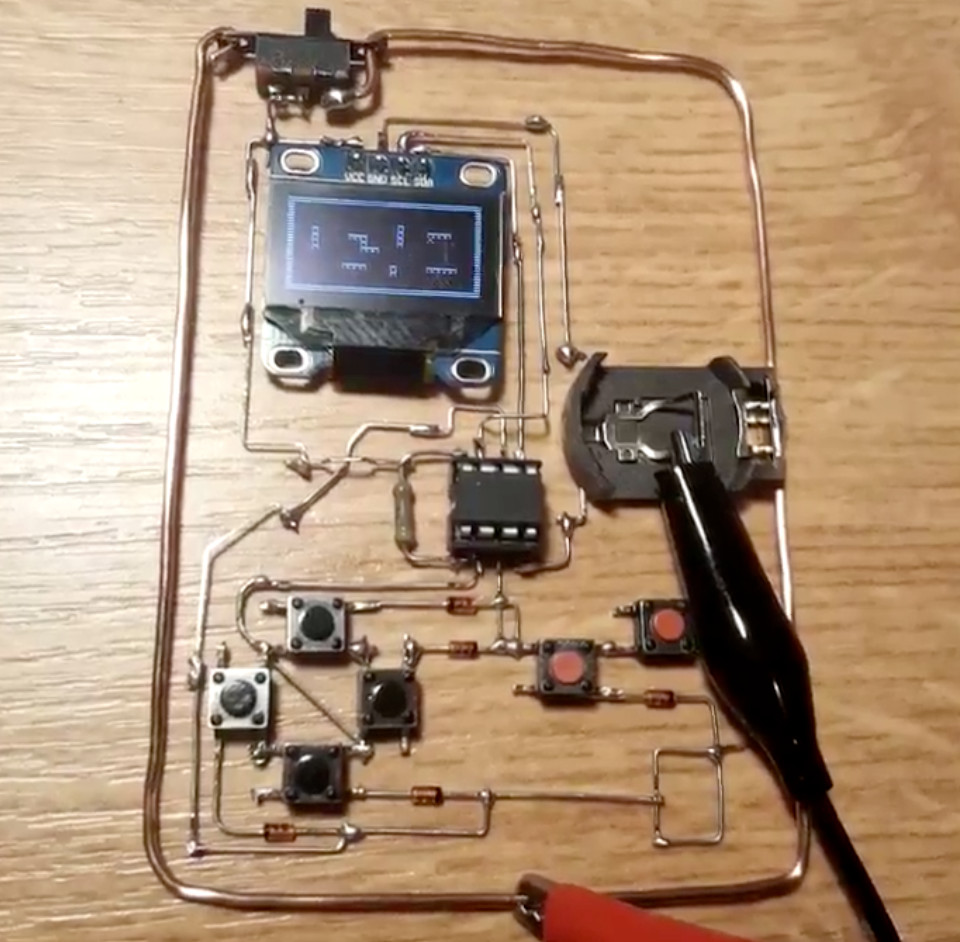
Having laid out a small piece of code, the author said that he switched to a different way of connecting buttons - using resistors (the microcontroller determines which button is pressed according to which resistor is connected to it), and published the video:
And I stopped publishing updates of the project on Hackaday.io, but from the video description it follows that it was filmed for the Element14 website (by the way, this is silicon). Well, follow the developer there and find this page .
Here the project is already up to date, the Code.zip and Schematics.zip archives are laid out, in which there is enough information to repeat the console. The software part of the project is also under the GPL (update: in the developer’s commentary on Element14 it says that the software has been forked from here ).
A new way to connect the buttons involves fewer pins of the microcontroller, which made it possible to make this console, unlike the previous one, not “dumb”. The scheme was as follows:
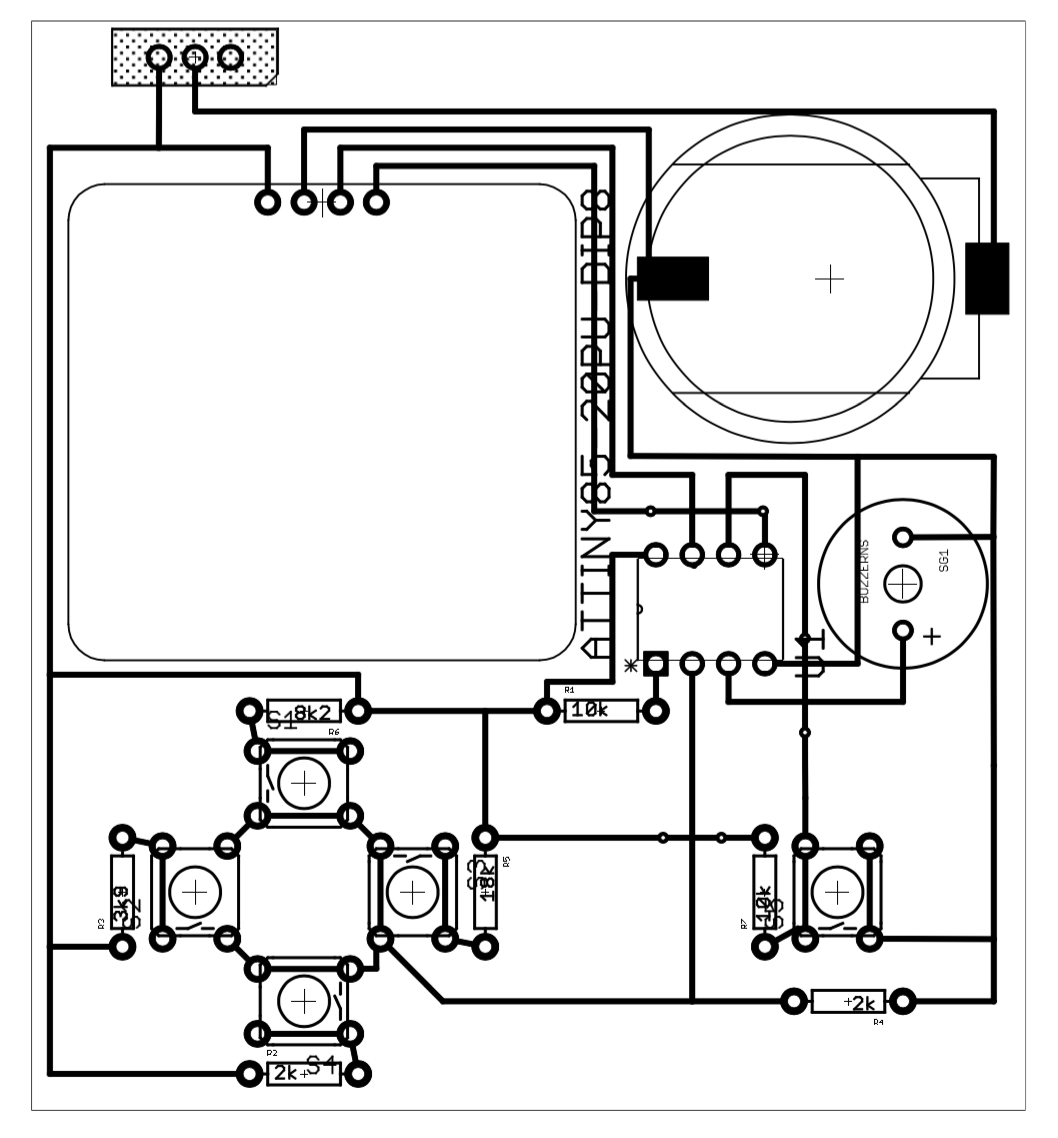
In this form, the device does not fit the definition of “handheld”, since it is impossible to play, holding the “skeleton” in your hand, it is deformed. You can put it on the table, or you can just stick it, for example, to the old unnecessary RFID, as the user did under the nickname xlamzerg:
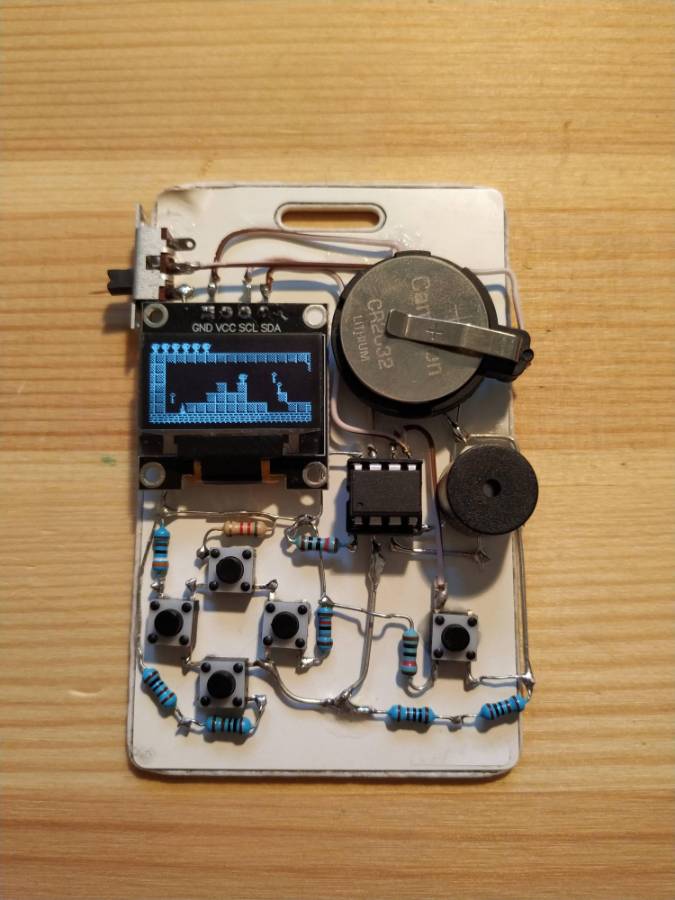
It is unlikely that both consoles are waited by the same success as the Arduboy, or by the very interesting, but not open source Dodo console, made on the present 6502 (about it later on). They will not have pages on various "-starters", The Tetris Company will not pay attention to them and will not offer to release an option under their own brand. But what can be no doubt - they will be repeated. Albeit in smaller quantities, but will be required.
Source: https://habr.com/ru/post/443918/
All Articles